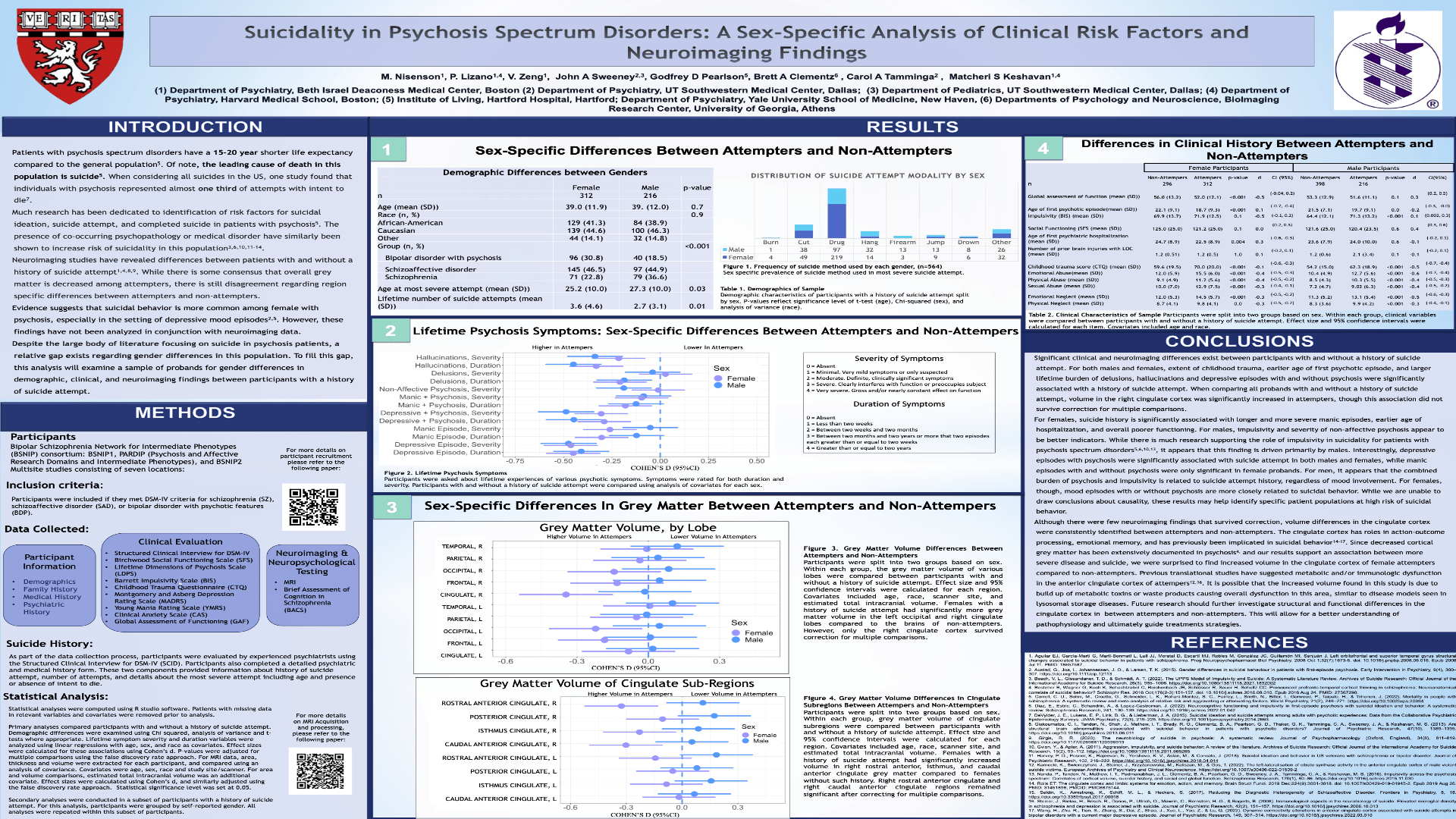Scientific Abstract
Background: Suicide is the leading cause of death for patients with psychosis spectrum disorders. While much research has focused on identifying risk factors and underlying neurobiological differences, fewer studies have specifically examined these measures for gender-specific differences between attempters and non-attempters.
Methods: Using demographic data, psychiatric history, and MRI-based grey matter volume, this study investigates gender specific differences between participants with and without a history of suicide attempt. Our sample is comprised of probands with schizophrenia, schizoaffective disorder, and bipolar disorder with psychosis who were recruited through the BSNIP consortium. Analyses were conducted using analysis of covariates and Cohen’s d. All p-values were adjusted for multiple comparisons.
Results: Attempters were significantly more likely to be female, younger at first episode of psychosis, and have a larger lifetime burden of childhood trauma, delusions, hallucinations, and depressive symptoms. For males, attempters were more impulsive and had more severe lifetime episodes of non-affective psychosis. For females, attempters had longer and more severe manic episodes and overall worse functioning. Female attempters had significantly more volume in the right cingulate cortex compared to non-attempters. When cingulate sub-regions were examined, female attempers were more likely to have increased volume in anterior cingulate regions compared with non-attempters.
Conclusions: While we expected to find decreased, not increased, volume in attempters based on previous research of grey matter volume in patients with psychosis, several disease models exist that could explain these findings. It is possible that the increased volume found in this study is due to build up of metabolic toxins or waste products causing overall dysfunction in this area, similar to disease models seen in lysosomal storage diseases. Future research should further investigate structural and functional differences in the cingulate cortex between attempters and non-attempters to provide a better understanding of pathophysiology and ultimately guide treatments strategies.
Search posters

